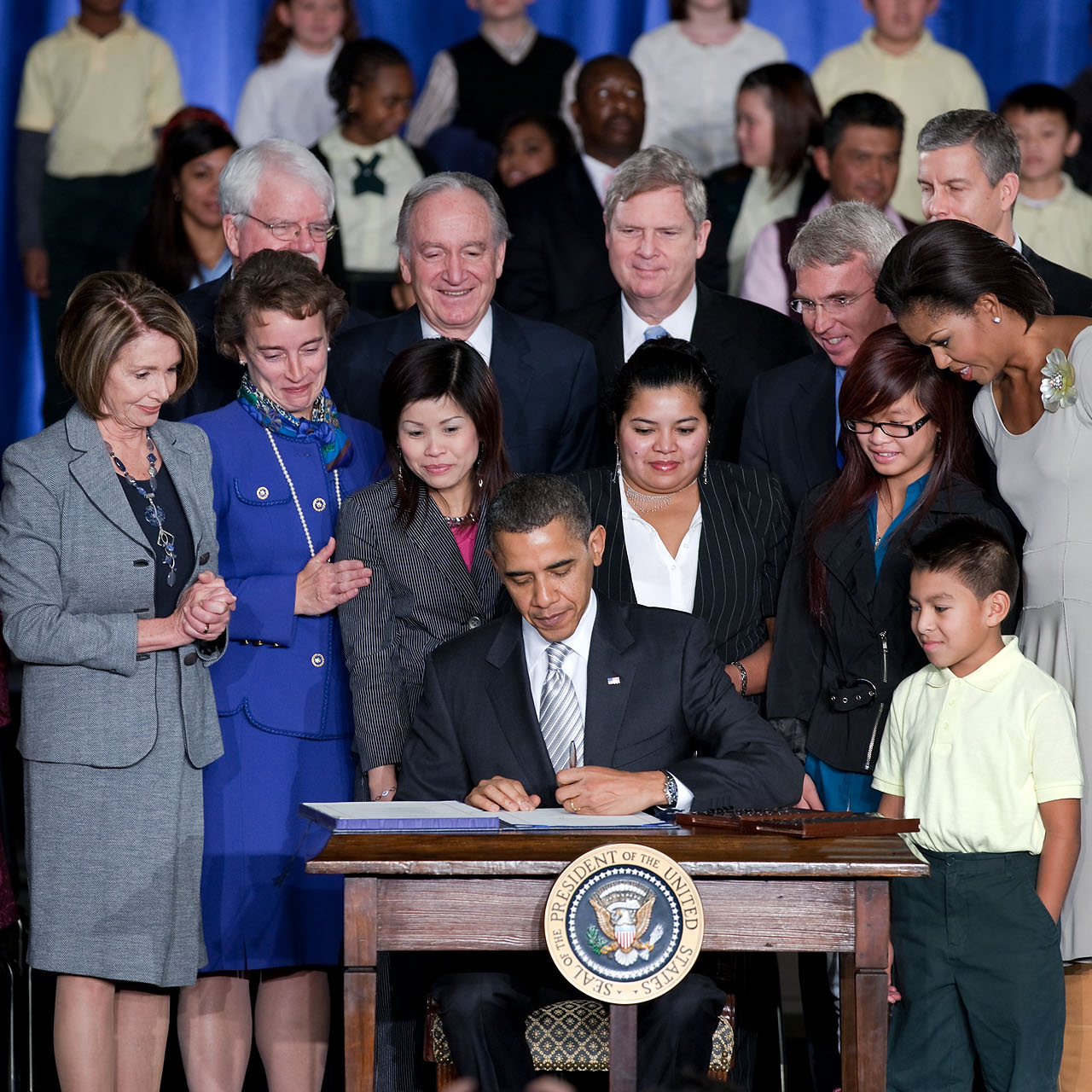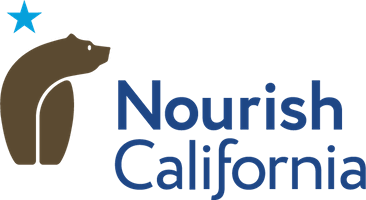A look back and a look ahead at the movement to serve meals to all students for free
School Meal Math - and a Little History
Let's start with a math problem: What is 58 x 1,100? Answer: Too many. Read on.
At the turn of the century (the year 2000), Nourish California staff were challenged to make it easier for low-income students to enroll in free school meals. We latched onto an "optional" opportunity to enroll students in households who received CalFresh (then called food stamps) or CalWorks into free meals without the need for a school meal application. Under this option, a county welfare office and a school district "could" enter into agreements to share information which would negate the need for a paper application for meals at school. This where the above math became a problem.
We had one staff person, Aparna, who encouraged school districts to use this option and helped them with data-sharing agreements with their county. At the time, there were about 1,100 school districts. Each of these 1,100 districts had to be convinced to use this data sharing process, known as direct certification. And then they each needed to enter into an agreement with their county. There are 58 counties. Hence the problem: 58 x 1,100 = too many "optional" district and counties agreements to put in place. As a result, only 27% of districts did any direct certification. There had to be a better way.

Initial help came in two waves. First, the federal government removed the "option." Students in CalWorks and CalFresh had to be automatically enrolled in school meals. The feds did not say how this direct certification should occur, so in California, our 58 x 1,100 problem remained. This second wave came from the policy leadership of then Assembly-member (now State Senator) John Laird.
John Laird authored AB 1385 for us in 2005. To solve the math problem, this pivotal piece of legislation required the creation of a state-level matching system to enroll CalFresh and CalWorks households into school meals. Once the bill was signed into law, a lot of work went into designing and implementing the system - too much to describe here. But the short story is that a system was designed to match information from the state health and welfare database with the state Department of Education who then shares a list of students eligible for free school meals with school districts. The creation of the system was a monumental achievement and it continues to operate to this day.

But soon after the successful creation of the system, a new math problem emerged. Because of California's historically low CalFresh participation (oftentimes the worst in the country), many students who should be getting easily enrolled in free school meals were left behind. At the time only about half of eligible households were enrolled in CalFresh. This means the other half were left out of the "match." Once again, John Laird, stepped in to solve the problem.
California's Medi-Cal program had much better reach than CalFresh (and even more so now). We worked with John Laird to get AB 2300 signed into law in 2008. This legislation directed the state to add Medi-Cal to the matching system to the extent permitted by federal law. It took a few years for the vision of AB 2300 to be realized as we pushed for federal authority. During this push, two very positive things happened: 1) MediCal enrollment in California soared with the implementation of Obamacare and 2) a new school meal option emerged as a gamechanger in the effort to serve all students for free.
Michelle Obama and the New Math
First Lady Michele Obama was a driving force behind historic legislation on school meals, the Healthy Hunger-Free Kids Act of 2010. There are lots of elements to this sweeping legislation but the most important element to this story is the creation of the Community Eligibility Provision (CEP). Under this provision, high poverty schools or groups of schools serve all students for free without collecting household applications. The provision introduced some new math to school meal enrollment and reimbursement and made the direct certification efforts described above critical to the universal meals movements. And in this new math, one figure, 62.5%, is elevated above the rest.

In place of paper applications, high poverty schools could use "Identified Students" in the new math. So who are these identified students? Students certified free eligible for school meals using methods other than a free and reduced student meal application. Recognize that group? They are students identified through direct certification as described above. Schools or groups of schools with 40% or more identified students are able to use the new math which utilizes a multiplier to enhance meal reimbursement. And in that math, schools or groups with more than 62.5% identified students would be reimbursed at the free meal rate for all meals served. Write down this 62.5% number. It won't be on the test - but it is important in telling the story of the next big expansion of school meals in California.
More Meals. Less Paper.

Our story picks up with Noun Abdelazziz. As a third-grader and the most proficient English speaker in her family, Noun remembers the pressure and fear she felt with the responsibility of filling out the school lunch application for herself and her siblings after her family immigrated to San Diego. The traditional application for school meals is a known barrier – the form requires a lot of detailed and specific information that’s easy to get wrong. So as High School Senior, Noun came to Sacramento to raise her voice in support of new legislation to dramatically increase school meal enrollment and create many more hunger-free schools.
The legislation Noun advocated, SB 138, would build on the work of John Laird and Michele Obama. Building upon a successful pilot in 14 school districts, SB 138 would finally realize the dream of using MediCAL data to enroll low-income students in free meals across the state. This meant hundreds of thousands of more students were enrolled in school meals and could be considered "identified students" under the Community Eligibility Provision. This is where SB 138 took another bold and needed step: it required that all high poverty schools in California had to serve meals for free to all students. How were high poverty schools defined? (Check your notes) Schools where 62.5% of students were "identified students" were considered high poverty. With the passage and implementation of SB 138, there are now over 3,500 schools in California serving all students for free.
The Covid Crisis And Beyond
When the Covid crisis hit, policymakers took action to ensure that school meals were still available when school was out or online. One of the flexibilities schools were offered was the ability to serve all students for free. This was an incredibly important action is it made meal provision more efficient and it provided food at a time of great economic hardship. Given this experience and the high cost of living in California, the movement to ensure school meals for all must be accelerated.
One clear opportunity is to Invest in School Meals for All. Nourish California is sponsoring state legislation and budget advocacy to allow more schools to continue serving universal free meals after current federal waivers expire. With strategic investments, the state can maximize federal funding to make this essential resource available during the aftermath of COVID-19 and beyond.
Another strategy is to group schools together to get over that magic 62.5% mark. We partnered with the San Diego Hunger Coalition and Open San Diego (a Code for America Brigade) to create Meals Count, a free online tool for schools. Meals Count helps school districts optimize their Community Eligibility Provision (CEP) applications, maximize school meal funding, and fight childhood hunger.
We invite you to join us in our advocacy by subscribing to updates at our Action Center.
Questions?
Contact: George Manalo-LeClair, at george@nourishca.org


